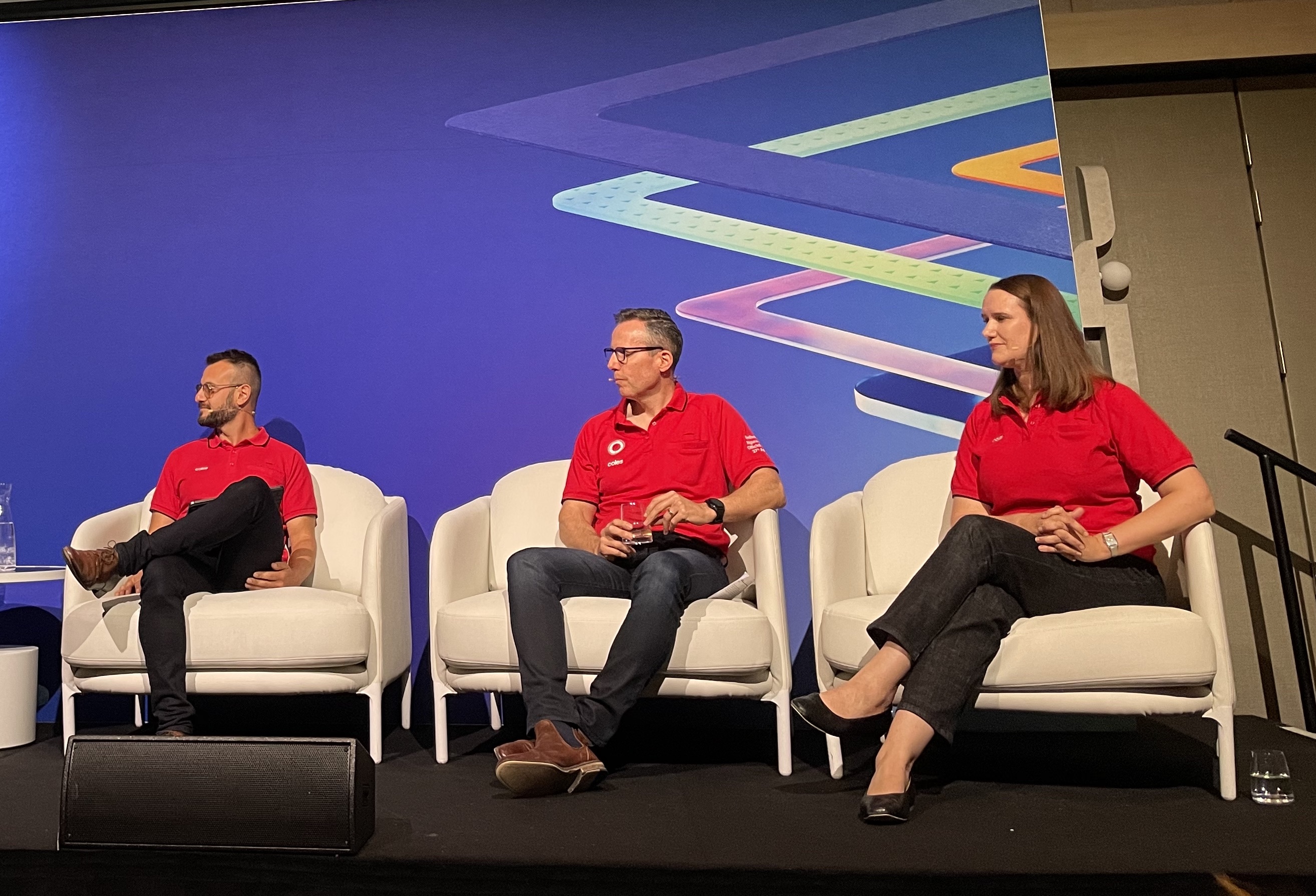
Coles Group has reached a critical mass of AI models in production and is now working to scale its capabilities and use of the technology.

(L-R) Silvio Giorgio, Richard Walker, and Roslyn Mackay from Coles Group.
Data and intelligence general manager Silvio Giorgio told a Microsoft AI Summit in Melbourne that the retailer has been progressively deploying AI for the past eight years.
Giorgio said there are “about 19 major models in production, largely focused on our operations side of the business.”
“Where we are moving though in the future of AI is we’re transitioning from starting AI to scaling AI,” he said.
“How you start AI is actually use case by use case, it’s the perfect way to do it. But now we’re at the stage where we have so much in production, we’re now moving towards scaling that.”
The company’s “AI vision” is to take a broader, more “holistic” view of the AI opportunities that lie across the group, and to “democratise” data access so that more teams can work with AI.
The idea is to “move from having centralised data science people to enabling other teams to start to play with the data and do funky things with it”.
The retailer’s vision will also see it place a “renewed focus” on intelligent automation and elevate personalisation efforts.
“We are investing in value, considering the times, and so how do we make sure that you get the best price available for the times?” Giorgio said.
The evolving vision for AI will also see some transformation of the enabling technology stack.
“AI has evolved significantly so you don’t have to build everything from scratch,” Giorgio said.
Giorgio also noted that any expanded use of AI would come with a reciprocal focus on data and model governance.
“I’m a massive advocate for data governance, and AI governance in particular,” he said.
“It’s not enough to put out solutions. There needs to be responsibility surrounding ethical AI as well.”
Giorgio said that Coles is particularly interested in “win-win solutions” that both help its team members and customers at the same time.
He noted that while past efforts were often focused on realising operational improvements, the company is bringing a customer-centric lens to future applications of AI.
Intelligent edge
A key technology enabler that allows Coles to run AI models in its retail sites is the intelligent edge backbone or IEB.
iTnews first revealed the IEB’s existence in 2021, where it was described as a way to quickly deploy technology into ‘edge’ locations – in this context, the group’s 1800-plus retail sites.
New details of the IEB were released to coincide with the Microsoft summit, notably that it utilises the “Microsoft Azure Stack HCI, Azure AI and ML.”
Head of technology innovation Roslyn Mackay said that vendors – particularly in AI’s early days – often suggested point solutions requiring dedicated infrastructure.
“If we had pursued that strategy, our stores would have been littered with cameras, out the back filled with servers, our team members would potentially be getting all these conflictive alerts from different sources, and [we’d have experienced] multiplying costs of all these point solutions,” McKay said.
“That drove our strategy of the intelligent edge backbone which is our central nervous system in effect to connect all the cameras and infrastructure in-store and have this central control plane where we can manage the events detected by those models, triage, work out the best way to notify the team members or whatever that action needs to be, and surface that data up to our enterprise data platform.
“Rather than having vendor dashboards for every different thing, we’re actually able to gather all of the insights from those models and manage that.”
Aside from manageability, the structure allows Coles to use software where it sees fit, rather than feel wedded to a particular ecosystem.
“It means we can be more ‘choosy’ about the models we want, rather than go ‘we’ve now invested with this vendor, we’ve got to use it as much as we can’.
“We’re in a better position to pick the best fit-for-purpose solution and trial that in different stores and just be able to manage those things at scale.”
One of the 19 major models in use is used for demand forecasting, which informs stock replenishment.
Giorgio said the model utilises “about 2000 different datasets – weather data, customer segmentation data, our promotional datasets, event data that happened in public, and we bundle all that to come up with a fairly sophisticated [forecasting] model.”
“If you think about it, we’re sending anywhere from 20,000 SKUs to about 830-odd [grocery] stores every single day across the year, and we actually forward project about 112 days into the future,” Giorgio said.
Another model is used to make recommendations to about 4 million FlyBuys customers every week, based on previous purchases and what likeminded customers are looking at as well.



 " title="
" title="

